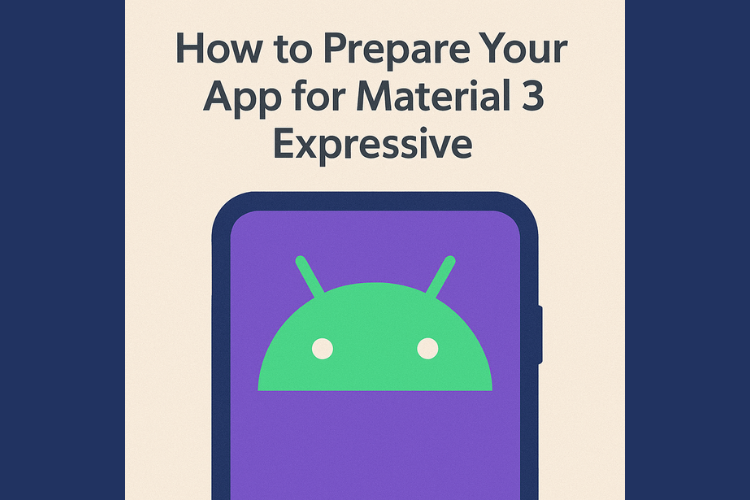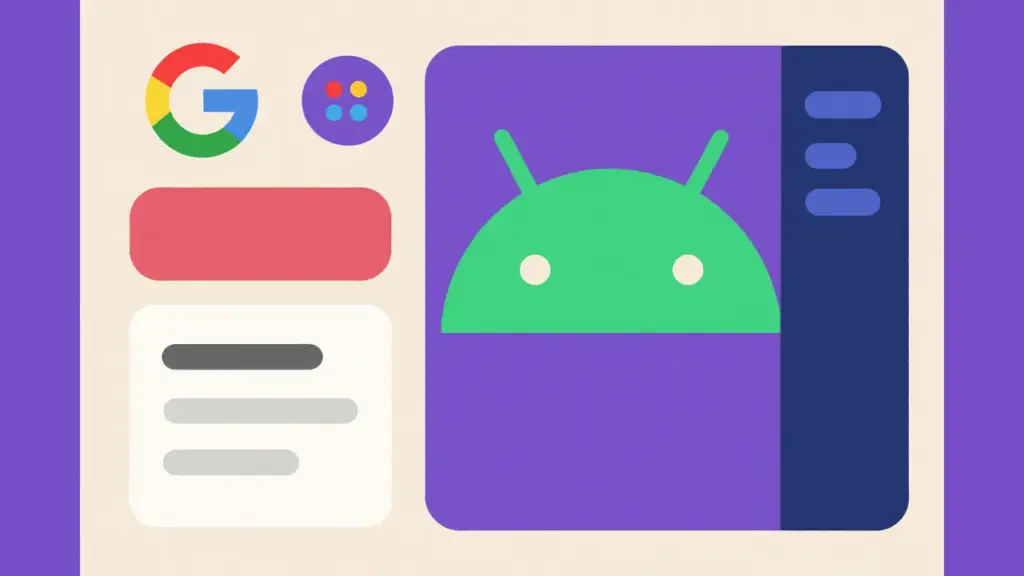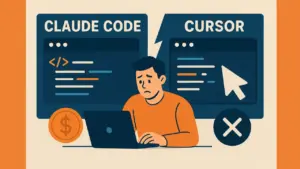Introduction
Google has officially unveiled what it calls the “biggest redesign in years” for Android: Material 3 Expressive. This isn’t just a visual refresh. It’s a complete philosophical shift in how Android interfaces are built and experienced. From phones and tablets to foldables and wearables, Material 3 Expressive touches every corner of the Android ecosystem. For developers, this update marks a critical turning point. Adapt now, or risk creating apps that look and feel outdated.
1. A Philosophical Shift in Design
Material 3 Expressive moves away from flat minimalism. Instead, it embraces emotion, responsiveness, and depth. Interfaces no longer just present information. They interact with users in meaningful ways. Every visual and interactive element is designed to make the device feel alive.
This change reflects a broader industry trend. Emotional design is becoming essential. Users no longer want sterile, static UIs. They crave designs that respond, adapt, and connect on a human level.
2. What’s New in Material 3 Expressive
Material 3 Expressive introduces several visual and interactive upgrades:
- Typography & Color: Fonts are bolder and more dynamic. Colors adapt to themes and states.
- Shape Morphing: UI elements now transition smoothly between shapes instead of simply appearing or disappearing.
- Springy Animations: Google has added natural, physics-inspired animations. Interactions feel playful and responsive.
- Tactile Feedback: Notifications and buttons respond with precise haptics, creating a tangible experience.
- Background Blur & Depth: Android now uses blur to show depth. The Quick Settings panel, notification shade, and app switcher layer elements for better context.
These are not superficial tweaks. They redefine how users experience Android. Apps that don’t align with these updates will feel disjointed.
3. Impact on the Android Ecosystem
Material 3 Expressive is not limited to smartphones. It covers:
- Tablets
- Foldables
- Smartwatches (Wear OS 6)
- Google’s core apps
This unified design language ensures consistency across all devices. Whether users switch from phone to tablet or from watch to foldable, the interface feels familiar. Developers must now design with multi-device experiences in mind.
4. Why Developers Must Pay Attention
This redesign isn’t optional. Apps that fail to adopt Material 3 Expressive will instantly look outdated. Users expect modern interfaces that align with their device’s OS.
Here’s why developers must adapt:
- User expectations have changed. People want apps that feel modern and dynamic.
- Consistency matters. If your app looks out of place, users might switch to alternatives.
- Platform-native design boosts engagement. Users trust and interact more with apps that feel native to their device.
Adopting Material 3 Expressive early can set your app apart in a crowded marketplace.
5. Technical and Architectural Implications
Material 3 Expressive demands more than visual changes. Developers must rethink app architecture. The shift to layered UIs, haptics, and animations affects performance and interaction flow.
Key areas to consider:
- Motion & Interaction: Implement responsive animations using Jetpack Compose or MotionLayout.
- Blur Effects: These require GPU optimization. Ensure your app runs smoothly on mid-range devices.
- Shape Morphing Logic: Define clear UI states and transitions. Avoid abrupt changes.
- Tactile Feedback Integration: Leverage haptic APIs to create meaningful vibrations.
Architectural flexibility is essential. Apps must adapt to different devices, screen sizes, and interaction models.
6. Lessons from 25 Years of Mobile Development
In over two decades of building mobile apps, few design shifts match this level of depth. The original Material Design in 2014 was significant. But Material 3 Expressive goes further. It blends design, motion, and emotion in a way that forces developers to rethink the basics.
Flat UI worked for years. But users now demand more. They want fluidity. They expect interaction. Material 3 Expressive isn’t just a design update—it’s a new way of thinking about user experience.
7. How to Prepare Your App for Material 3 Expressive
Preparation is key. Here’s how developers can get ready:
- Audit Your Current Design: Identify flat patterns and outdated components.
- Study Material 3 Guidelines: Google provides detailed docs on color schemes, shape systems, motion design, and accessibility.
- Prototype Early: Use Jetpack Compose to test shape morphing and animation.
- Optimize Performance: Ensure blur and animation run smoothly, especially on lower-end devices.
- Focus on Emotion: Think about how your app makes users feel. Add meaningful feedback, animation, and touch responses.
Stay updated. Attend Google I/O sessions. Follow Android developer blogs. Participate in community discussions.

Conclusion
Material 3 Expressive marks a major turning point in Android design. It’s more than a visual refresh. It’s a call to rethink how users experience and feel your app. For developers, this is both a challenge and an opportunity. Those who embrace the change will create interfaces that feel alive, intuitive, and emotionally connected.
As part of the evolving Android community, StartupHakk encourages developers to stay ahead of the curve. Adapting to Material 3 Expressive is not just about surviving the shift. It’s about leading it.




